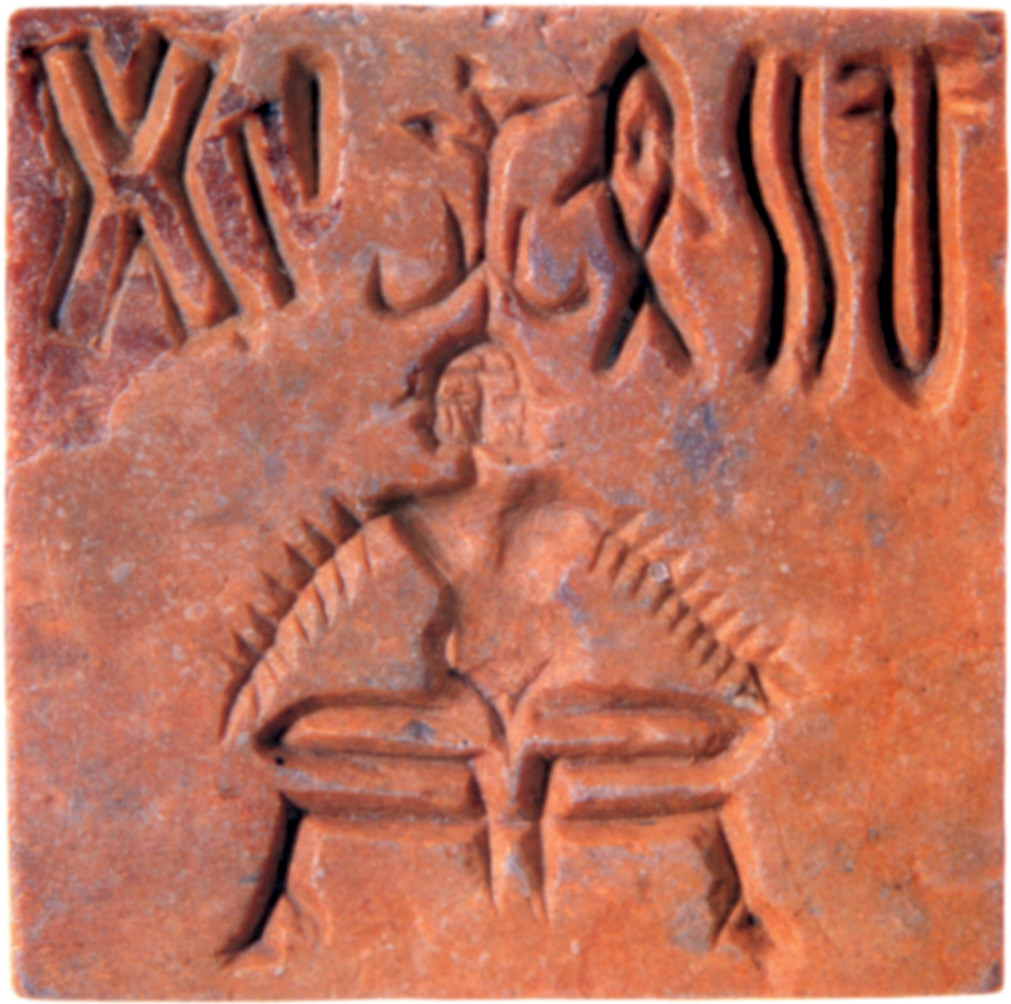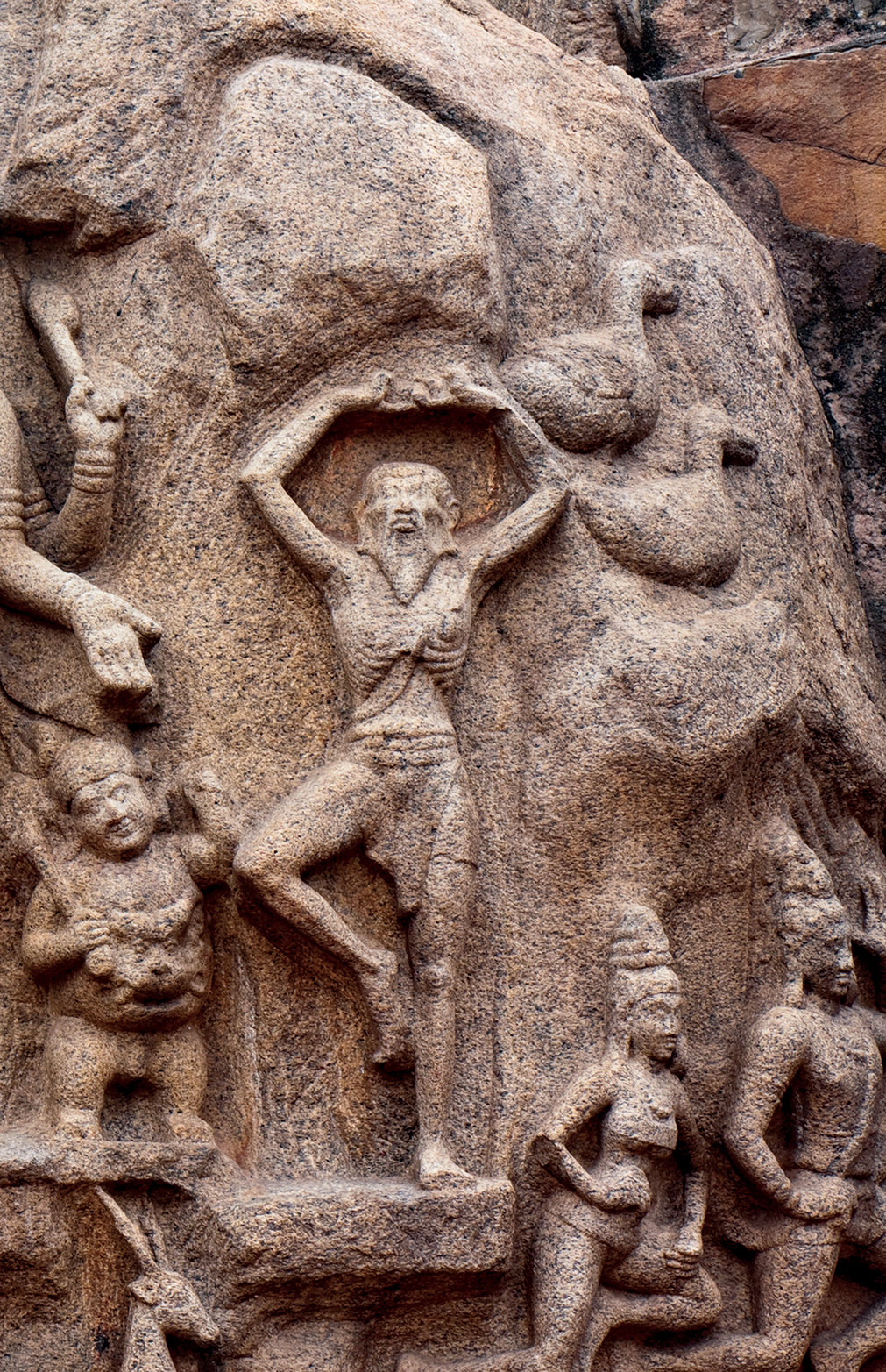The practice of yoga for health has become popular in the United States and worldwide. A recent survey estimated that 36 million Americans may be variably engaged in yoga (
1). In India, where yoga has been practiced for centuries in homes and ashrams, three universities are now dedicated to teaching and research on yoga.
The origins of yoga are between 2,500 and 5,000 years ago. The earliest images of yoga are soapstone seals from the Indus Valley archaeological site of Mohenjo-Daro (3rd millennium B.C.E.) (
2) depicting a yogi in a cross-legged posture, the Lotus pose; several other images of Yoga appear in later Indian art (see
Figures 1 and
2). Yoga in Sanskrit means “to unite,” as in the yoke of a chariot that connects the carriage to the horses. The Katha Upanishad (ca. 6th century B.C.E.) mentions a hierarchy of body, mind, and spirit where the body is the chariot, the senses and mind are the horses, and the spirit is the charioteer (
3). As eloquently presented in the Bhagavad Gita (
4), the yogi turns his mind inward, detaching from the material world to realize the true nature of the self. This may be accomplished through one or more yoga approaches, such as Bhakti (spiritual), Jnana (knowledge), and Karma (duty and action).
Sage Patanjali (ca. 500 B.C.E.) (
5) is credited with authoring a compendium of aphorisms (sutras) on a nontheistic integrative form of yoga, referred to as Raja Yoga, with eight components (Astanga): mental discipline and restraint (Yama, Niyama), controlled postures (Asanas), conscious breathing (Pranayama), detachment (Pratyahara), and meditation (Dharana, Dhyana, and Samadhi). Patanjali’s second aphorism states, “Yoga is the control of the conscious mind and mental operations” (Yogah Chitti Vritti Nirodah).
During the 10th century C.E., yogic practices called Tantra developed (
6). These claim to tap a serpentine energy, “Kundalini,” at the root of the human spine. Hatha yoga, a form of yoga focused on extreme psychophysical practices to actualize this energy, developed between the 10th and 12th centuries C.E. These practices continue to capture the imagination of many. Various combinations of Raja and Hatha yoga have since emerged, variably emphasizing meditation, breathing, and postures.
Swami Vivekananda introduced yoga to the United States in 1893 at the World Conference on Religions in Chicago (
7). In the last century, dedicated yoga teachers of India popularized yoga practice in the United States, as documented in the chronology by George Feuerstein (
8). Wellness programs, schools, and fitness clubs often include yoga in their offerings. World Annual Yoga Day, established as June 21 by the United Nations, was celebrated in Times Square (
Figure 3).
A bibliometric analysis of the health effects of yoga found 238 studies targeting a variety of conditions, including cancer, cardiac disorders, maternal health, and mental health (
9).Many benefits were listed, including improvements in immunological health, mood, pain, anxiety, and auditory hallucinations. Studies are using techniques such as functional MRI to elucidate the mechanisms of action (
10). Yoga could be a low-cost complementary therapy for many medical and psychiatric conditions, but more research is needed.




